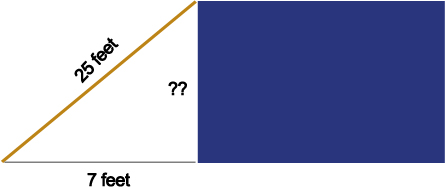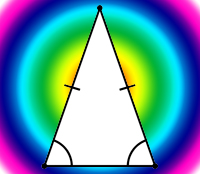Here’s today’s SAT question of the day, which is a math question about triangles and circles:

Hint: why do they tell us that ABC is equilateral? Continue reading

Here’s today’s SAT question of the day, which is a math question about triangles and circles:

Hint: why do they tell us that ABC is equilateral? Continue reading
Today’s SAT question of the day is a fun math question that reviews some geometry basics. You’ll definitely need those basics for your test, so let’s give this one a try.

We are told that the radius of circle O is 5 and that the area of the shaded region is 20pi. X is what we are seeking.
Since the area of a circle is pi * the radius squared, we know that the whole circle’s area is 25pi. Let’s also remember that there are 360 degrees in a circle. Continue reading
Today’s SAT Question of the day is a quick and easy math problem. The test makers would like to know how many non-overlapping squares with side length 3 can fit inside a square with side length 6. My favorite way to solve this is with some quick sketches:

Today’s SAT question of the day is a cool math problem about a ladder! Really, it’s kind of fun. The question:
A 25-foot ladder is placed against a vertical wall of a building, with the bottom of the ladder standing on concrete 7 feet from the base of the building. If the top of the ladder slips down 4 feet, then the bottom of the ladder will slide out how many feet?
First, we have to make a sketch of the initial ladder setup:
Well, hello. If x = 60 degrees, y = 40 degrees, and those dashed lines are bisectors, what might we say is the value of z?

Quick review: to bisect something is to cut it into two equal parts. In this case, x is cut into 2 30-degree angles and y is cut into 2 20-degree angles. Are we there yet?
Today’s SAT question of the day is a geometry question about a triangle that isn’t even shown on the test. This triangle, however, is shown. They tell us that this one (ABC) is congruent to mysterious triangle DEF.

Today’s ACT question is about the area of a trapezoid – they were nice enough to give us that formula right in the problem, so it’s a piece of cake! Careful substitution cake with algebra frosting.
The formula they give us is:
a = (1/2)*h*(b1 + b2) (h is the altitude, b1 and b2 are the parallel bases)
Today’s ACT question of the day is a repeat of the question we just saw on January 22 about applying the Pythagorean theorem and simplifying radical expressions.
Instead of going over it again, let’s take a moment to remember at least one Pythagorean triplet (3, 4, 5 – a great time save on test day if you know how to apply it).
And, for practice, simplifying another radical expression:
√108 = √(9 * 12 ) = (9 * 4 * 3) = 3√(4 * 3) = 6√3
Check:
6^2 = 36
36 * 3 = 108
Today’s ACT question of the day is asking: do you know the Pythagorean theorem, and can you simplify a radical expression?
If you do and can, this is a 20-second question. If you don’t, you should the Pythagorean theorem now: a^2 + b^2 = c^2. That is, the square of the length of each side (or “leg”) of a right triangle is equal to the square of the length of the hypotenuse. This theorem makes an appearance dozens of times in various ways throughout your test, so keep it with you.
Now that we’ve got that out of the way, let’s apply it! Continue reading
 Today’s ACT question of the day is almost too easy to explain. We are given an isosceles triangle, drawn to scale, and the measure of the third angle (the one without a corresponding angle): 22 degrees.
Today’s ACT question of the day is almost too easy to explain. We are given an isosceles triangle, drawn to scale, and the measure of the third angle (the one without a corresponding angle): 22 degrees.
Isosceles triangles have two congruent angles and two congruent sides. There are 180 degrees inside a triangle. If you keep those two ideas in mind, you will have this problem solved before I can even finish explaining.